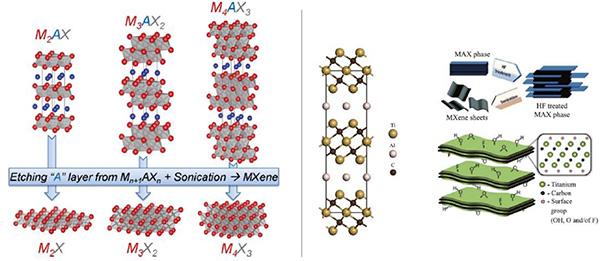Key Points
- Scientists from UNSW and ANSTO have characterised the structure of advanced materials, that could be used as a lightweight fire-retardant filler.
- The atomic and molecular structure of the Mxenes affects their electrical, thermoelectric, magnetic, and other properties
- Small-angle neutron scattering at ANSTO revealed critical information about the nanolayers of Mxene
Scientists from UNSW and ANSTO have characterised the structure of advanced materials, that could be used as a lightweight fire-retardant filler.
Fire retardant materials can self-extinguish if they ignite.
A team under Professor Guan Heng Yeoh, Director of the ARC Training Centre for Fire Retardant Materials and Safety Technologies at UNSW and Thermal-Hydraulic Specialist at ANSTO, are working to commercialise advanced products for bushfire fighting, building protection and other applications.
They investigated a family of two-dimensional transition metal carbides, carbonites and nitrides, known as MXenes.
In research published in Composites Part C, they reported the molecular structure of MXene, using neutron scattering and other advanced techniques.
Because the stability, properties, and various applications of MXene rely heavily on its atomic and molecular structure, Prof Yeoh and associates conducted a detailed structural and surface characterisation of MXene.

Synthesis of Mxenes
Knowledge from this research provided good insight on how structure affects electrical, thermoelectric, magnetic and other properties of Mxene.
Experiments at ANSTO's Australian Centre for Neutron Scattering on the Bilby small-angle neutron scattering (SANS) instrument were undertaken to characterise the two-dimensional structure of nanosheets-revealing the thickness of the material and the gaps between layers.
Theoretical modelling was used to extrapolate key information from the SANS data regarding the structural architecture of the titanium carbide nanosheets and investigate the influence of temperature on the structure.
Measurements revealed that MXene that is suspended in a colloidal solution consists of nanosheets of ultrathin multilayers with clear sharp edges.
The material comprises nanolayers, which overlap each other and form clusters of micro-sized units that endow a level of protection.
The nanolayers can be added on top of organic fire-retardant polymers. The total thickness of MXene was found to be 3 nm.
The information was in alignment with observations made using scanning electron microscopy and transmission electron microscopy.
Senior Instrument scientist Dr Jitendra Mata said, "Using SANS is like looking through a keyhole, the keyhole gives you a size indication from 1 nanometre to 500nm. It may feel like a small size, but it's actually not - many physical phenomena and the chemical structure occur within that size range.
"There are not many techniques in the world that gives you information about the structure and surface that accurately in a suspension and in films. Also, neutrons are ideal for many in-situ studies."
Protective suits made with traditional retardant use as much as 30 to 40 per cent carbon compounds to achieve fire-retardant properties, which makes them heavy.
"Because we can use very low concentrations of the two-dimensional material, it comprises only about 1- 5 per cent of the total weight of the final material," explained Prof Yeoh.
"And because it can be applied as a post-treatment, it doesn't complicate the manufacturing process."
When heat comes from above the surface of the material, it is conducted and moved along the nanosheets dispersing it. The nanosheets also act as a heat shield.
"At this point, it takes a lot of time to etch out the aluminium, but there are groups working on upscaling the MXene production process," said Prof Yeoh.
"We also need to look at the performance and characteristics of the material at higher temperatures up to 800°C," he added.
At the macro level, early tests have found the material to be an effective fire retardant.
A large team of researchers from the UNSW and ANSTO contributed to the research including first authors, Anthony Chun Yin Yuen and Timothy Bo Yuan Chen and ANSTO instrument scientist, Dr Andrew Whitten.
The versatile material could also potentially be used in energy storage devices.






